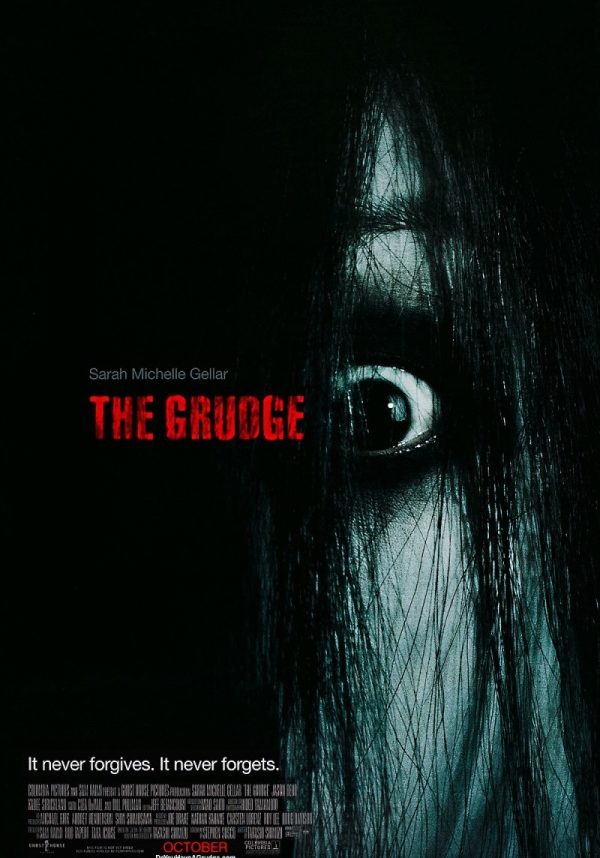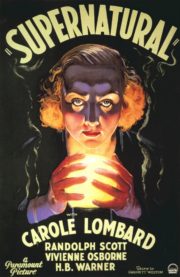When the Past Refuses to Die: A Look at “The Grudge” (2004)
“When someone dies in the grip of a powerful rage… a curse is born.” These bone-chilling words set the tone for “The Grudge,” a 2004 American supernatural horror film directed by Takashi Shimizu. Shimizu, who also helmed the original Japanese version, “Ju-On,” made his Hollywood debut with this eerie and tremulous tale of a curse that transcends boundaries and spares no one.
The story unfolds as a series of fragmented, non-linear vignettes following those afflicted by a vengeful spirit born from a brutal family homicide. The curse, a series of pervasive hauntings spun from the depths of rage, grips everyone who dares step into the doomed Tokyo house. When Karen Davis (Sarah Michelle Gellar), an exchange student and care worker, encounters this malevolent curse, her life spirals into chaotic terror.
The Crafted Cloud of Dread: Atmosphere and Tension in “The Grudge”
“Silence is a scary sound,” and “The Grudge” thrives in tonal disquietude. The brilliance of the film lies not in blatant gore or easy jump-scares but in its meticulous attention to an omniscient sense of dread. The film’s atmosphere is heavy with anticipation, pregnant pauses, and the inherent unease of knowing something is decidedly wrong. Shimizu masterfully weaves a haunting narrative where daily domesticity becomes the playground for horror, exploiting the viewers’ most primal fears.
From fleeting shadows to eerie creaks, Shimizu employs a vast array of suspense-building tools, ensuring the audience’s nerves are frayed to breaking point. The film’s non-linear storytelling heightens this disorientation. By denying viewers a clear narrative progression, “The Grudge” muddles perceptions of safety, leaving you adrift in its spooky world.
Cinematic Shadows: The Art of Visual Terror
The film’s cinematography bids farewell to the garish and steps into the realm of the subtly sublime. Gritty textures and a somber color palette breathe life into the oppressive gloom of both the haunted house and the lives it curses. Camera angles often hint at unseen terrors; perspectives skew, leaving one to wonder what might lurk just off-screen. Unique visual techniques, such as deliberate pacing and chilling tableaus, coalesce to create an unyielding sense of eerie foreboding.
Special effects in “The Grudge” are used with scrupulous restraint, solidifying the film’s haunting realism. Visual tricks are not the core driver but serve to punctuate the horror, magnifying the film’s impact at critical junctures.
Whispers and Screams: The Power of Audio in Fear-Making
Sound, or the strategic lack thereof, plays a paramount role in crafting “The Grudge’s” sinister atmosphere. Mournful echoes, the guttural death-rattle of the cursed specter, and the jarring crescendos during moments of terror amalgamate into an auditory nightmare. The soundtrack’s subtlety complements the film’s visuals, enhancing suspense to near-unbearable levels. At times, the silence itself is a harrowing preset for the film’s most hair-raising events.
Mortal Reflections: The Cast within the Curse
The performances of “The Grudge” must bear the weight of silent terror, with actors delivering through understated horror-strewn expressions. Sarah Michelle Gellar provides a grounded portrayal of Karen, each revelation of the curse’s depth reflecting in her agonizing journey toward understanding her grim reality. The supporting cast delivers performances steep with genuine fear, contributing to the overall palpable distress and lending credibility to the supernatural happenings.
Characters may not be intricately developed, given the narrative’s piecemeal revelations, but their portrayals serve the intended purpose: to evoke empathy and horror in equal measure. Their reactions are a convincing chronicle of confrontation with the inexplicable and malevolent.
Genre Hauntings: Traditional Tropes and New Nightmares
Existing within the supernatural subgenre, “The Grudge” is replete with the paranormal tropes many horror fans crave. Yet, the film also subverts expectations, skewing traditional narratives and amplifying psychological overtones. It eschews the visceral shock of gore for a more persistent, creeping dread. The film’s reliance on atmospheric horror rather than visual brutality constructs a terrifying experience of an altogether different sort.
Looking Beneath: The Grudge’s Deeper Themes
While “The Grudge” is rooted in supernatural terror, the film subtly scratches at the surface of deeper societal issues such as neglect, retribution, and the inevitability of death. By entrenching horror in domestic spaces, the film poses a grim examination of familial dysfunction and the legacies of violence. It utilizes fear as a lens through which audiences can confront the unsettling implications of unresolved anger and the potent aftermath of tragedy.
Final Considerations: Does “The Grudge” Hold Up?
In evaluating “The Grudge,” its power lies in its ability to evoke a primal reaction to the unknown. Despite some narrative fragmentation, it remains genuinely disturbing and often thought-provoking. Pioneering in its approach to horror cinematography and atmospheric construction, this film may not cater to those seeking traditional Western horror beats but is a must-watch for enthusiasts of the genre looking for a sinister slow burn.
Fans of Asian horror films or those with an appetite for psychological and supernatural terror will find “The Grudge” an enjoyable watch. Viewers predisposed to its methodical pace will reap a rich, unsettling experience.
In conclusion, “The Grudge” stands as a formidable entry in supernatural horror. Its strengths lie in its atmospheric mastery and a horror that is felt more deeply than seen. As with any horror containing intense scenes, viewer discretion is advised. For those willing to cross the threshold into its cursed abode, “The Grudge” serves as a chilling reminder that some deaths never rest in peace.




